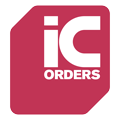Passive components are the fundamental building blocks of any electronic circuit. They play a crucial role in the functioning of electronic devices, yet their importance is often overlooked. This article aims to shed light on what passive components are, their types, and their applications in the world of electronics.
The Basics of Passive Components
Passive components, as the name suggests, are electronic components that do not require any form of external energy to perform their function. Unlike active components, they cannot amplify or control electrical energy. Instead, they use the electrical energy supplied to them to perform a specific task, such as resist, store, or filter electrical energy.
The primary characteristic that distinguishes passive components from their active counterparts is their inability to increase the power of a signal. They can only attenuate or decrease the power. This is a fundamental concept in electronics, and understanding this is key to understanding how passive components work.
Types of Passive Components
There are three main types of passive components: resistors, capacitors, and inductors. Each of these components has a unique function in an electronic circuit, and they are often used together to achieve a desired outcome.
Resistors
Resistors are perhaps the most common type of passive components. Their primary function is to resist the flow of electric current. This resistance is measured in ohms (Ω). Resistors are used in virtually every electronic device, from the simplest circuits to the most complex computer systems.
There are several types of resistors, including fixed resistors, variable resistors, and thermistors. Each type of resistor has a specific use, depending on the needs of the circuit.
Capacitors
Capacitors are another type of passive component. They store electrical energy in an electric field, which can then be used when needed. The amount of energy a capacitor can store is measured in farads (F).
Capacitors are used in a variety of applications, from power supply filters to coupling and decoupling circuits. They are also used in timing circuits, where they can control the timing of certain events.
Inductors
Inductors are the third main type of passive components. They store energy in a magnetic field when electric current flows through them. The amount of energy they can store is measured in henries (H).
Inductors are used in a variety of applications, including filters, transformers, and oscillators. They are also used in power supply circuits to smooth out the output voltage.
Applications of Passive Components
Passive components are used in virtually every electronic device. They are essential for the functioning of these devices, and without them, the devices would not work.
One of the most common uses of passive components is in power supply circuits. Here, they are used to filter out noise and smooth out the output voltage. This ensures that the power supplied to the rest of the circuit is clean and stable.
Passive components are also used in signal processing. They can be used to filter out unwanted frequencies, to couple or decouple signals, or to control the timing of events. This makes them essential for the functioning of communication devices, audio and video equipment, and computer systems.
Conclusion
Passive components are an integral part of any electronic circuit. They perform a variety of functions, from resisting the flow of electric current to storing electrical energy. Understanding how these components work and how they are used is essential for anyone interested in electronics.
Whether you’re a professional engineer, a hobbyist, or just curious about how your electronic devices work, understanding passive components is a crucial step in your journey. So next time you use your smartphone, watch television, or use your computer, remember the crucial role that passive components play in making these devices work.
Now that you have a better understanding of passive components and their significance in electronics, you might be looking to source these essential parts for your projects. Look no further than IC Orders, your experienced independent distributor in the electronic component market. With over 12 years of expertise, we’re here to ensure that you find the exact part numbers you need to complete your Bill of Materials (BOM). Contact Us for A Quote Today and let us help you streamline your electronic component procurement process.
